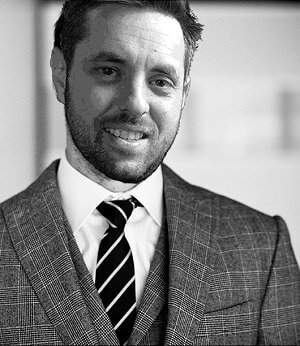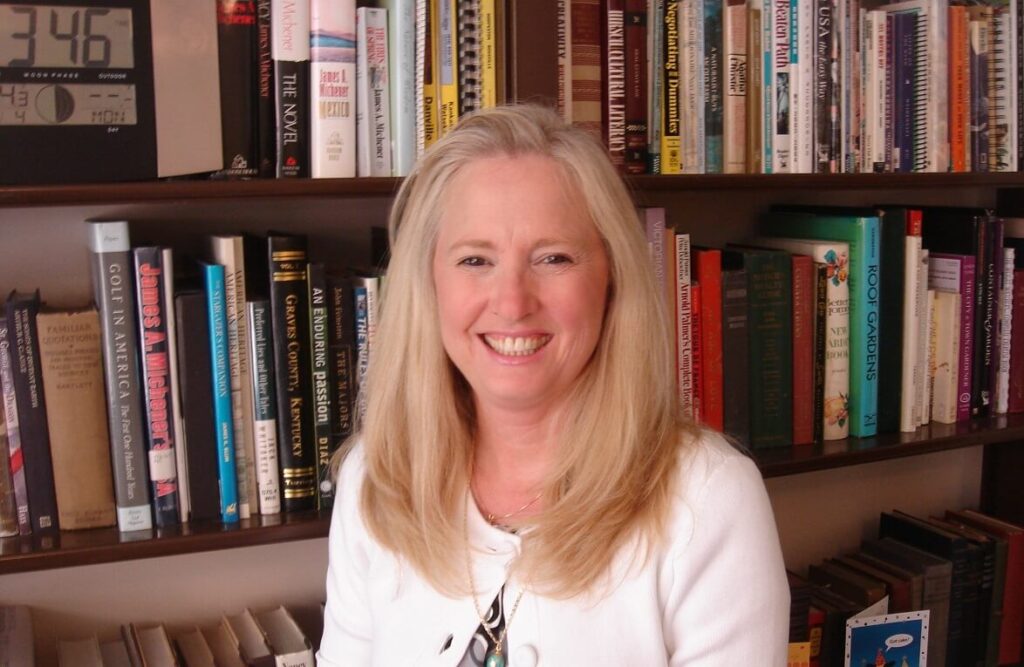 To get the inside scoop on today’s commercial real estate market, we sat down with an expert in the field. In this Workplace Unplugged interview with Brad Kuskin, Managing Agent of Keller Williams Commercial Real Estate, we discuss how the CRE industry has changed over the past 15 years and get the need to know details about buying and leasing real estate today.
To get the inside scoop on today’s commercial real estate market, we sat down with an expert in the field. In this Workplace Unplugged interview with Brad Kuskin, Managing Agent of Keller Williams Commercial Real Estate, we discuss how the CRE industry has changed over the past 15 years and get the need to know details about buying and leasing real estate today.
Brad has been a licensed real estate broker since 2001 and has participated in over 300 acquisitions, mergers, and lease executions in his career. With an advanced degree in Real Estate and the three business degrees, which include Finance, Real Estate, and Computer Sciences, we asked Brad where his career began and how he ended up in his current role at KW CRECO.
BK: I attended school at the University of Wisconsin-Madison and then moved to New York City. I started working on Wall Street, on the Risk Arbitrage Trading Desk for Bear Stearns right out of college. I eagerly moved within Bear Stearns to the Investment Banking Department, focusing on Corporate Strategy, which was exciting but a little too cut-throat for me at the time. Little did I realize that I would rely on these Investment Banking instincts as I moved into a career in commercial real estate. Around 2004, I noticed a wave of capital streaming into the investment real estate markets – and I was offered an opportunity to help put some of this capital to work one investor at a time. That’s what led me really into the real estate market. Although I hold Bachelors degrees in both Real Estate and Finance, I felt that the commercial property markets would allow me to straddle the intersection of these two disciplines, fostering a platform to succeed within an exploding segment of the capital markets. I was “all in” by the time CRE skyrocketed in early 2005.

KW CRECO is Keller Williams’ Commercial arm in South Florida. We asked Brad to tell us what makes KW CRECO stand out from other CRE firms.
BK: Really it is the synergy between the residential side and the commercial side of the Keller Williams network. Now that Keller Williams is the largest real estate franchise in the nation, there is a unique synergy between the residential and commercial needs of our clients. With South Florida attracting residential buyers from all over the world, Keller Williams provides its clients with full real estate services – even as those needs cross over into the commercial sector. Whether clients are moving to Florida as part of a retirement plan or business relocation strategy KW Commercial is always in-tune with the dynamic South Florida markets and the ever-changing demands of our clientele.
As Keller Williams continues to sit at the forefront of the residential real estate world, KW Commercial adds to the network through a large commercial presence. With offices in every state and over 150 licensed agents nationwide, KW Commercial offers clients a one stop shop; the ability to stay within the Keller Williams network for the second homes, vacation homes, primary homes and also for any commercial business locations or investment properties helps push Keller Williams as the premier agency in the sector.
With Brad’s depth of expertise in commercial real estate, we asked him to tell us what have been the biggest changes he has observed in the industry over the past decade.
BK: Well, I can say in the beginning, the early 2000’s, there was a lot less technology. So there was a greater reliance on old fashion networks – who you knew. Then when everyone started to jump into the commercial real estate markets, a lot of residential brokers or agents started to get into it and tried to treat it a lot like residential. Where it was based on how it looked, you know the location, how it presents, that kind of thing.
Since the crash of 2008/2009, we’ve gone back to what seems like the fundamentals of the market. Where we are really underwriting them diligently, we are really looking at financials, combined with the credit market tightening – not everyone can qualify these days. We are back to a market where we have accredited investors, people who know what they are doing and brokers who are working towards that end that are really focused solely on commercial. We don’t have a lot of residential brokers that are just throwing their hat in the commercial ring. And vice-versa, a lot of commercial guys don’t do residential.
Now we have a heavy reliance on technology and things have changed a lot in terms of locating properties. It’s not necessarily an old rolodex network where commercial brokers help clients simply locate a property buy or lease. Instead, technology has forced commercial brokers to truly add value to a transaction. Anyone can target a property through a simple online search, but an experienced and talented broker will get the transaction complete. Commercial real estate is not quite as black and white as residential transactions. Buyers are presented with financial projections that help guide business decisions – it’s not quite as personal as the location of a house or how modern a kitchen may be. Instead, commercial agents are tasked with identifying dozens of variables that are presented with any purchase offer. It’s way more complex than the offering price and often, buyers, leasees, and even sellers rely on proven commercial professionals to help guide the transaction to the closing table. Also, much like my earlier Investment Banking days, commercial real estate can be very cut-throat and some inexperienced buyers or lessees, may end up with the short end of a stick if they venture into a transaction without an experienced guide.

Brad wrote an article called the “happiness coefficient” that speaks to the intangible qualities developers and investors need to focus on today. Brad tells us why happiness indicators – intangibles that can’t really be quantified but have that feel good type of value-added coefficient – should be kept in mind when creating space for millennials.
BK: Many times, real estate investors rely on bottom-line profits to drive commercial real estate deals. However, more and more financial underwriters are failing to accommodate to the intangible value that many younger buyers are attributing to the “feel good” factor of commercial property. It seems that lately, investors and businesses aren’t always seeking out the best value per square foot. Instead, sustainability, design, and societal impact are variables that remain difficult to quantify or underwrite for many professionals.
It seems that the younger generation is focused on things that are less quantifiable: how green is the community, what is the sustainability factor, can I walk, do I have to get my car every time, proximity to green markets or organic markets, and also the sense of community that’s been intertwined. What premium will a new urbanist style development command over a traditional development project? These are the questions facing many real estate investors and, often, we are still waiting for the answer. It seems to be generational, but people may pay a premium for these types of “goodwill” based variables – but it is hard to quantify how much of a premium.
While Brad’s article was primarily focused on developer strategies, the happiness indicators apply in office buildings today as well.
BK: Office space has changed tremendously even in the 15 years or so since I’ve been involved in the markets. Of course, it is regionally based, but you know we are getting a little bit away from these large open space office cubicles, and more towards natural lighting within offices. More towards a focus on fresh air, outdoor break rooms, natural light, and those types of things.
It has come back a little bit since the 2000 tech bubble – when people had ping pong tables, and people were going around the office in scooters and those kinds of things. A little more formal than it was, but the office environment definitely has that type of happiness coefficient, if you will. What kind of productivity can business owners extract from their workplace environment?
With flexible working on the rise, we asked Brad how flexible working (like hot desking, hoteling and home workers) has changed the landscape of how companies buy and lease real estate.
BK: The one thing I have noticed is that the location premium is definitely not what it used to be. It used to be that large offices, large law firms, they needed to be downtown. They would pay two to three times any other market rent to be in that spot that they needed to be – proximity to courthouses, proximity to residential development or whatever. And these days companies seem to be seeking out a more sustainable, and simultaneously, affordable location – more suburban, more workplace happy. They don’t have the necessity to be in the downtown location. So it is really expanded the city past the downtown boundaries and helped to contribute to suburban sprawl in many metropolitan areas and certainly throughout Southern Florida.

When asked about the future of the CRE industry, Brad tells us how much technology has changed and will continue to change the commercial real estate playing field.
BK: These days in business leasing or investment of property purchase it is hard to find something that is outside the market. With technology providing such a transparent window into everything from market trends to financial analysis, everyone is performing high definition financial analysis. Anyone can push a button and get any kind of 1, 3, 5 mile radius demographic study.
So it has really kind of evened the playing field but it has created kind of a more liquid commodity type of market, so shopping centers, or apartment buildings or land even. They trade similarly across regions based on some sort of coefficient or multiplier. But we are not seeing these pocket listings so to speak, where investors are getting well above market types of returns. We are not finding offices that get leases that are significantly below market. It is more like a commodity trading arena then it is the old fashion “who you know” commercial real estate environment. Think of it like this: Before online listings, a real estate investor only had to compete with the handful of commercial buyers in his or her immediate area – those who the listing agent could contact. Today, a listing agent posts a property for sale and it ends up in tens of thousands of inboxes across the country. Now that same investor is competing with other investors from around the world for the same property. Thousands of people are looking at a property instead of a few dozen..
We asked Brad what the one piece of advice he would give his younger self when starting out in the industry would be – he gave us a few insightful words of wisdom!
BK: Don’t underestimate the other person’s ability or willingness seek out lower prices or profit more monetarily. I think that I’ve been burned a couple times trusting people where over a few dollars they jump ship and go somewhere else.
And really I’d say don’t count on anything until it is closed. I’ve seen too many deals where brokers or whomever, the second they get that letter of intent they start calculating what the commission is going to be. The second they meet the person, the only thing they focus on is the commission. And I was probably guilty of that in the beginning too.
But I think that if you do the best for your clients and you really focus on their success that will ultimately lead to the broker’s success. Focus on getting them the best deal. Because referrals, and word of mouth and getting positive reviews from clients is the best type of marketing out there.
For more industry insights, check out Brad’s featured posts on KW CRECO or you can reach out to Brad directly by sending him an email at [email protected]
Photos:Scott Webb, Trent Yarnell, Startup Stock




